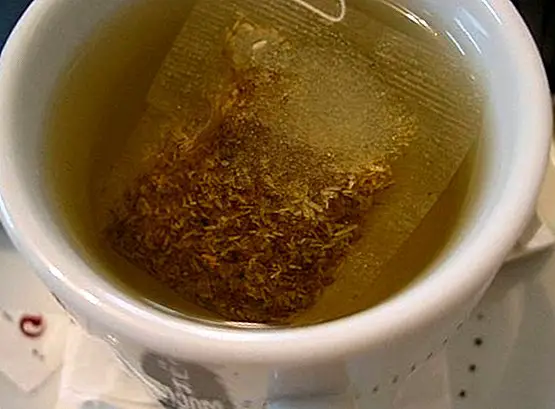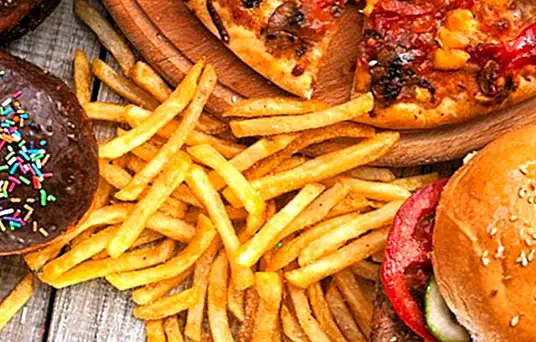Phytoestrogens: what they are, what they are for and where to find them
The human body actually has 17 hormones whose existence is simply essential for the proper functioning of our body. Depending on the hormone before which we find their functions will obviously be different, so that some are responsible for acting directly on the circulatory system, and others to accelerate the metabolism or to retain sodium and water.
In the case of those known as sex hormones, estrogen stand out together with the progesterone for being one of the most popular hormones, especially by many women. Why? Mainly because they are considered as female sex hormones, but the reality is that men also have them, although it is true that in smaller quantities.

Precisely, Estrogens are the hormones responsible for female sexual characteristics, that begin to appear after the beginning of the first menstrual period from puberty, until the arrival of menopause.
Its functions? In addition to taking charge of the development of the growth of the breasts or the appearance of the menstruation, also they avoid that the bones lose calcium, activate the production of the cholesterol HDL (that is to say, they participate in the metabolism of the fats), they have an important paper in the Collagen production and contribute to maintain urinary frequency.
A woman's body, specifically her ovaries and adrenal glands, produce estrogen in greater quantity during the period of puberty, when sexual maturity begins in women. Then, the level of these hormones tends to remain more or less stable until the beginning of menopause, where there is a drastic decrease.
But we can also meet with those known as natural estrogens, named exactly with the name of phytoestrogens. As its own denomination indicates, we are facing Estrogens of natural origin.
What are phytoestrogens?
With the arrival of menopause in women, and the so-called as andropause in men, it is necessary to choose to follow a balanced and appropriate diet for the different disorders that tend to appear during this time of life.
Surely in many moments you have heard or read about them, but do you really know what is behind theseplant estrogens?.
The phytoestrogens are chemical compounds found in certain foods of vegetable origin, constituting themselves as authentic plant estrogens(or, what is the same, estrogen of plant origin).
Although there is a great diversity of phytoestrogens, the most important ones are isoflavones (or flavonoids) and the lignans.
More specifically, they are chemical compounds present in certain foods of plant origin, that exert an action in the organism quite similar to the human estrogens, since its chemical activity is similar to that of the animal hormones.

In nature we are precisely with different phytoestrogens, which we distinguish especially in small amounts of food such as legumes, cereals, vegetables and soybeans.
Where to find phytoestrogens? In what foods?
We find phytoestrogens only in certain foods of natural origin, and especially in small quantities, so that depending on the food or food group where we find it, they will also receive different names. They are the following:
- Lignans: we find them mostly in whole grains, legumes and flax seeds.
- Cumestanos: we find them in beans, lentils and alfalfa.
- Indoles: They are present in the vegetables belonging to the cabbage family.
- Isoflavones: They are probably the most popular and known. We find them mainly in soy, but also in green tea and black tea, in grapes and also in red clover.
In the particular case of isoflavones are the most similar to estrogen produced by our body. And the food richest in isoflavones is soy (both soybeans and their by-products such as tofu or soy sauce), given that 100 grams of soybeans provide 300 mg. of isoflavones.
What are its main functions? What are they for?
Numerous studies have investigated the effects of phytoestrogens on health, highlighting - and as an example - the Asian population, which according to statistics shows a lower incidence of cardiovascular diseases, osteoporosis and in women in particular menopausal disorders.
According to many of these studies, This lower incidence has been related to their diet, which is very rich in soy. In fact, it is estimated that the average consumption of isoflavones in the Asian population is around 55 mg. a day, when in the western population it is only 5 mg.

However, there is not enough scientific evidence at the moment that allows to recommend how much isoflavones a day would help in the prevention of these diseases and conditions.
In any case, many of its benefits are known. We summarize them below:
- They help reduce the symptoms of menopause, especially decreasing the intensity of hot flashes.
- Lowers high levels of LDL cholesterol (bad cholesterol).
- Prevents cardiovascular diseases.
- Having antioxidant action helps reduce or delay cell aging.
On the other hand, it can not be categorically said at the moment that phytoestrogens help to prevent osteoporosis, given that in the case of Oriental women, their incidence in this disorder is mainly due to the monitoring of a much healthier diet, in comparison with the western population. This article is published for informational purposes only. You can not and should not replace the consultation with a Nutritionist. We advise you to consult your trusted Nutritionist.


